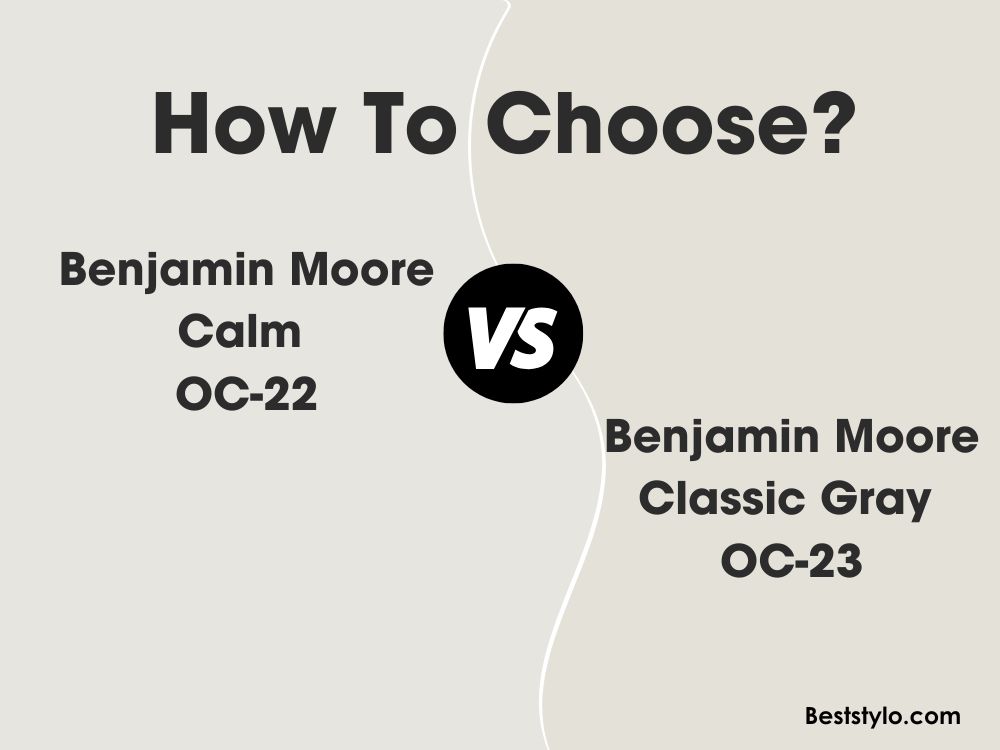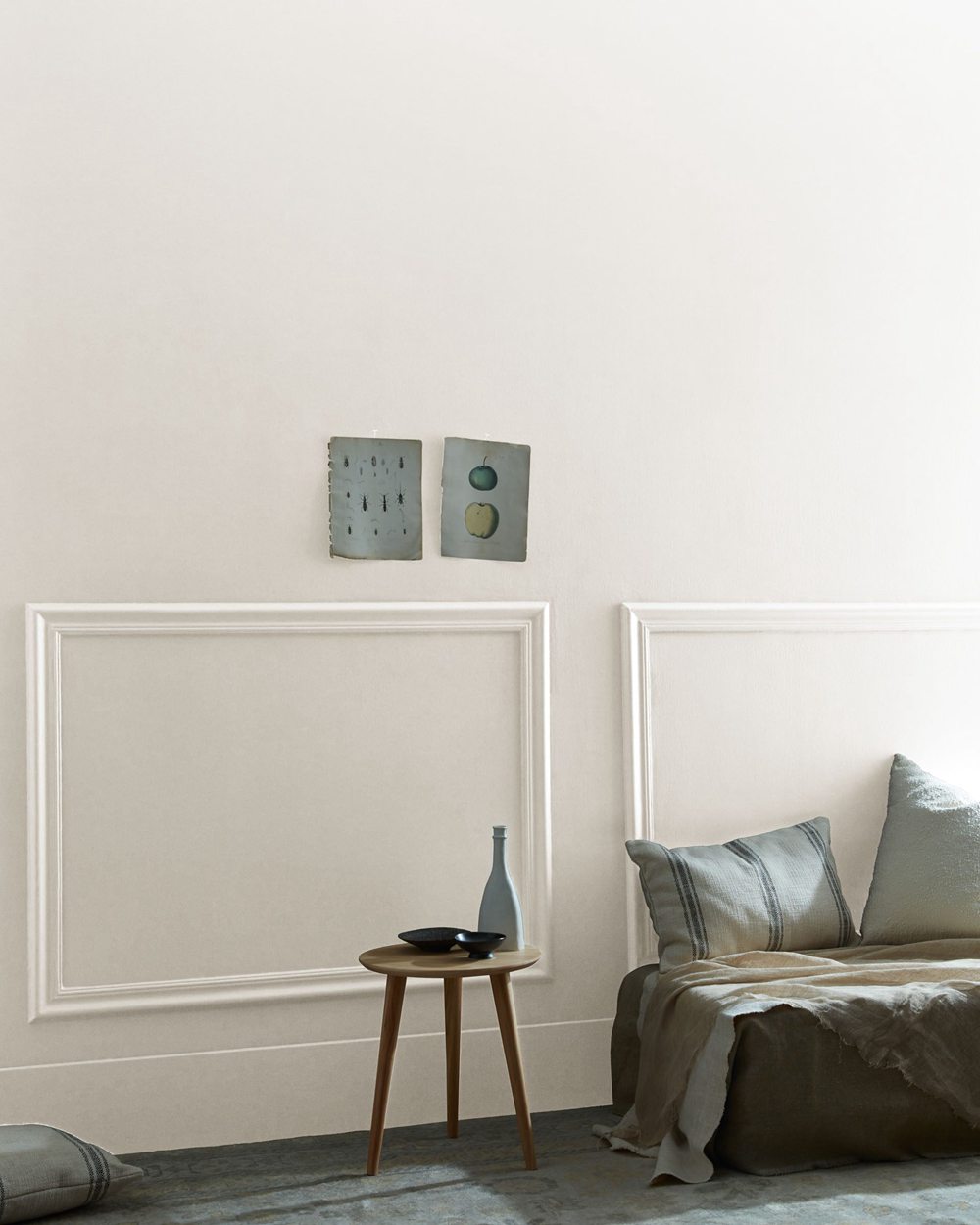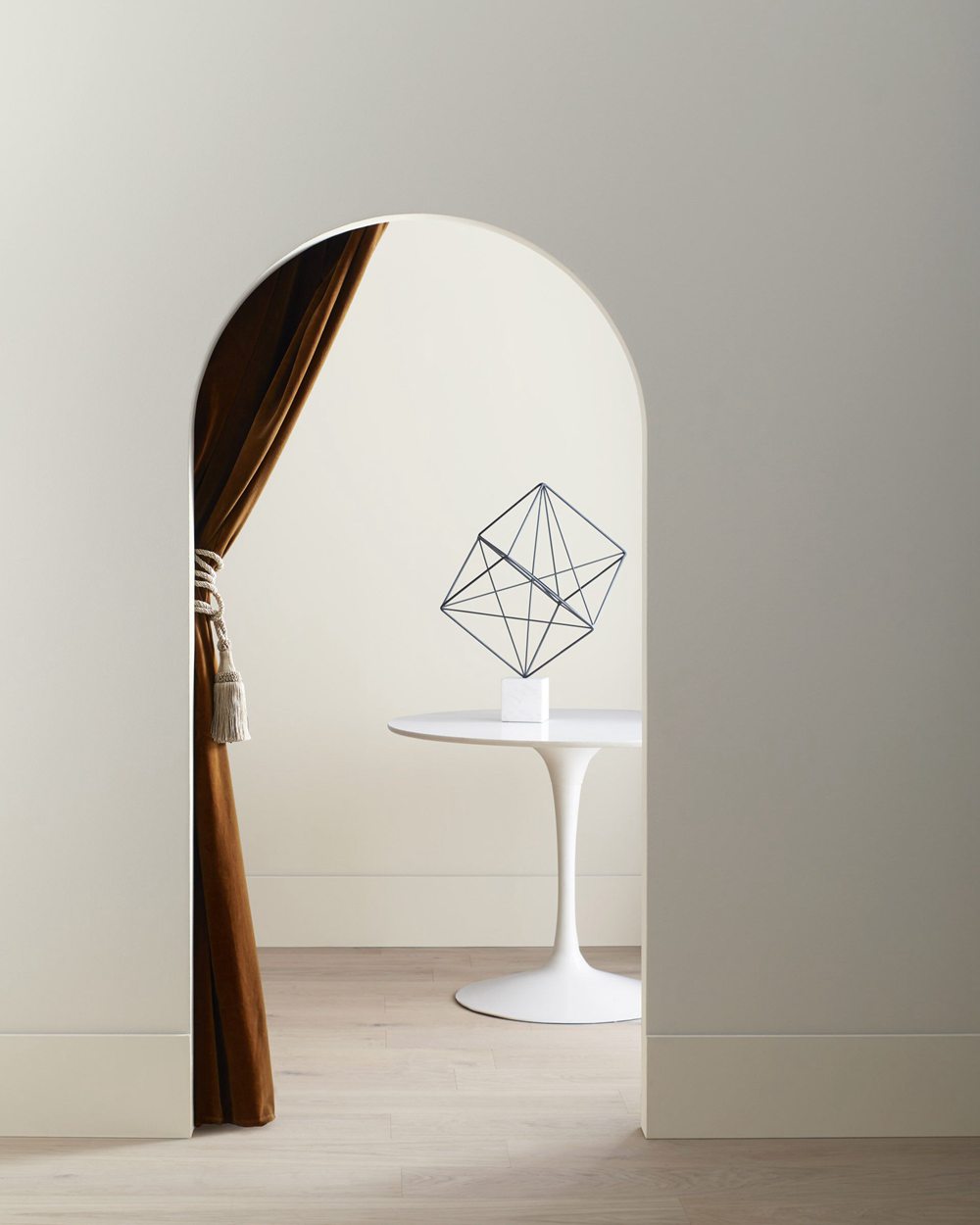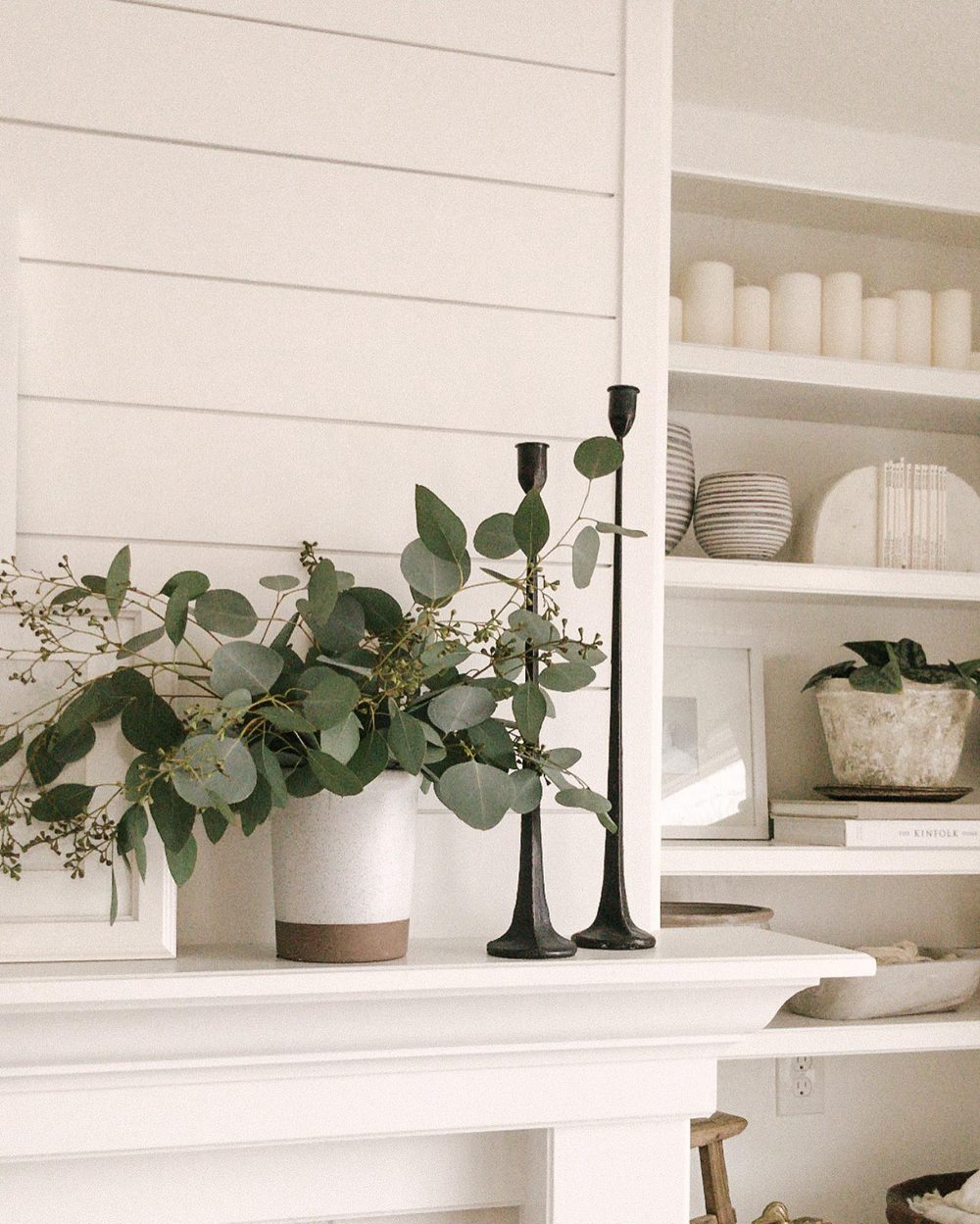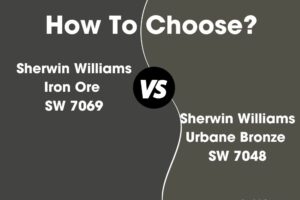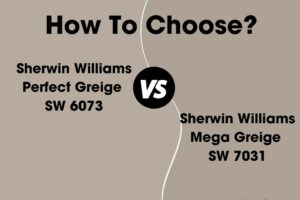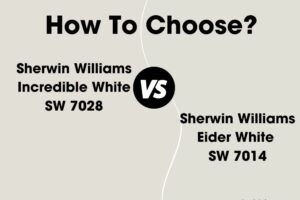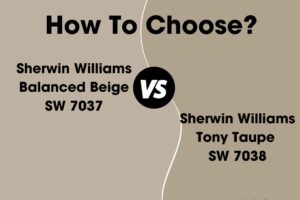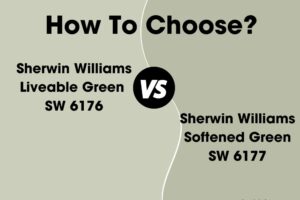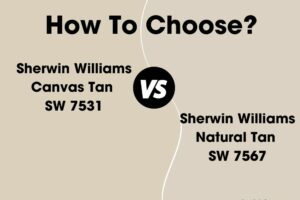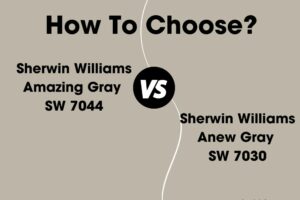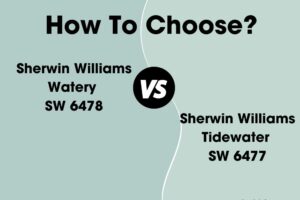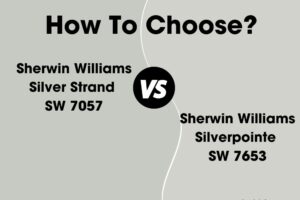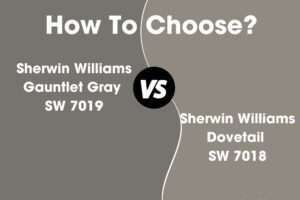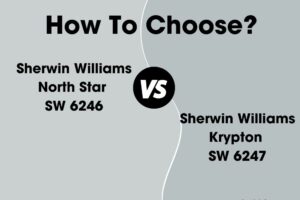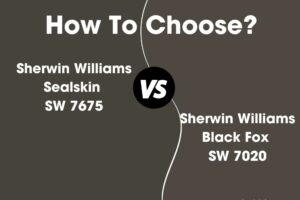When creating a soothing, elegant color scheme, it’s hard to go wrong pairing a light clean white with a cooler classic gray. Two options that work beautifully together from Benjamin Moore’s palette are Calm OC-22 and Classic Gray OC-23. But what exactly sets these tranquil hues apart?
In this article, we’ll analyze Calm and Classic Gray in depth. We’ll compare undertones, light reflectance, real life photos, and best room usages. Read on to determine which Benjamin Moore color is right for your home.
Table of Contents
Key Differences Between Calm and Classic Gray
Before diving into the details, here is an overview of the main differences between Calm and Classic Gray:
- Color Family – Calm is a bright clean white, Classic Gray is a cooler gray
- Undertones – Calm has subtle cool undertones, Classic Gray has blue undertones
- Light Reflectance – Calm has an LRV of 75.83, Classic Gray has an LRV of 73.67
- Use – Calm illuminates spaces, Classic Gray provides contrast
- Rooms – Calm for walls and trim, Classic Gray for accent walls
Now let’s explore Calm and Classic Gray more thoroughly.
Benjamin Moore Calm OC-22
With an exceptional light reflectance value of 75.83, Benjamin Moore Calm OC-22 lives up to its soothing name. This gorgeous bright white paint color excels at opening up any space.
Here are some key facts about Calm:
- LRV: 75.83
- Undertones: Subtly cool
- Finish: Flat, eggshell, pearl
- Best Spaces: Walls, trim, cabinets in dark rooms
- Popular Combinations: Grays, blues, greens
Calm is often described as one of the “whitest whites” Benjamin Moore offers. It has the slightest cool undertone that prevents starkness or dinginess. The result is a perfectly balanced, clean bright white.
The outstanding 75.83 light reflectance value allows Calm to excel at reflecting light. This makes it an ideal choice for illuminating any darker space needing increased brightness.
With its well-balanced brightness and barely cool essence, Calm works beautifully as:
- Ceilings, crown molding, and trim
- Kitchen cabinets and open shelving
- Bathroom walls, wainscoting, and tile
- High contrast pops against bold colors
Benjamin Moore Classic Gray OC-23
With its cooler blue-gray tone, Benjamin Moore Classic Gray OC-23 creates a gorgeous moody backdrop in any home. This popular neutral gray has widespread appeal.
Here are some details about Classic Gray:
- LRV: 73.67
- Undertones: Cool blue
- Finish: Available in all paint sheens
- Rooms: Living rooms, bedrooms, offices
- Pairs Well With: Crisp whites, soft blues
Classic Gray shifts in appearance based on lighting. In bright rooms it appears as a clean medium gray. In dim lighting, subtle blue undertones come forward for added depth.
The 73.67 light reflectance value provides enough illumination without making the gray feel dark or dreary. Classic Gray nicely brightens a room while still feeling refined.
With its cool essence and versatility, Classic Gray suits modern, transitional, and traditional spaces alike. Use it anywhere you want a relaxing gray backdrop. Ideal rooms include:
- Living room accent walls
- Bedroom and office feature walls
- Dining room and study walls
Comparing Calm vs Classic Gray
Now that we’ve examined Calm and Classic Gray independently, let’s compare them directly:
Color Family
Calm is a clean, extra bright white that reflects a lot of light. Classic Gray is a cooler-toned gray that absorbs more light.
Undertones
Calm has the subtlest hint of coolness, while Classic Gray has distinctive bluer undertones.
The faint coolness of Calm adds brightness without starkness. The blue in Classic Gray creates a relaxing, moody vibe.
Light Reflectance
Calm has an exceptionally high LRV of 75.83 compared to Classic Gray’s lower 73.67 LRV.
This means Calm will make spaces feel bright and airy, whereas Classic Gray provides refined contrast.
Rooms
Calm excels on ceilings, trim, cabinets, and in any dark space needing illumination. Classic Gray shines as an accent wall color in sophisticated living areas.
Paint Finish
Both Calm and Classic Gray come in Benjamin Moore’s full line of paint sheens from matte to high gloss.
Calm vs Classic Gray Comparison Chart
Here is a quick overview comparing some key traits of Calm and Classic Gray:
| Paint Color | Calm OC-22 | Classic Gray OC-23 |
|---|---|---|
| Color Family | White | Gray |
| LRV | 75.83 | 73.67 |
| Undertones | Subtly cool | Cool blue |
| Use | Illumination | Contrast |
| Sheens | All sheens | All sheens |
Real Life Photos – Calm vs Classic Gray
Let’s look at real life photos of spaces painted in Calm and Classic Gray to better see how they compare:
Calm OC-22
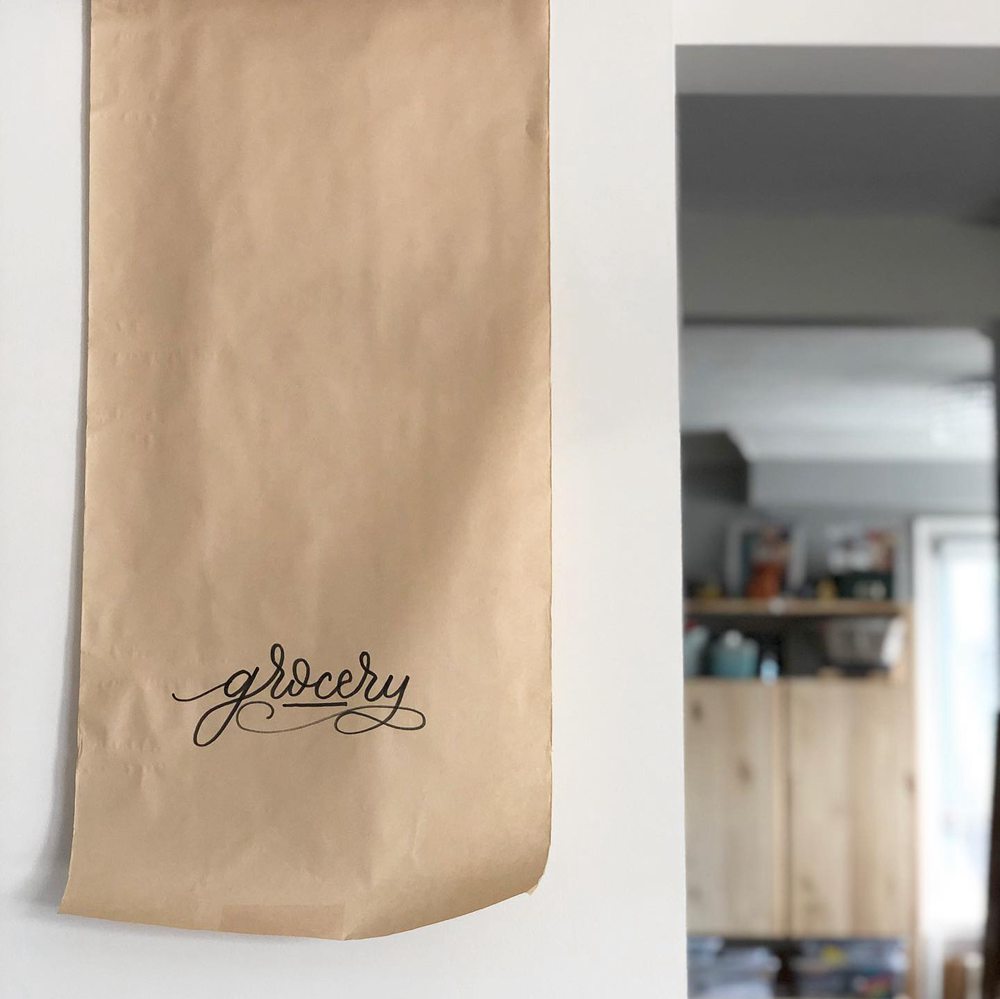
Classic Gray OC-23
The photos demonstrate how the exceptionally bright Calm contrasts beautifully with the cooler, sophisticated gray tone of Classic Gray. Their opposing undertones and light reflectance values create visual interest.
Should I Choose Calm or Classic Gray?
So how do you decide whether to use Calm or Classic Gray in your home? Here are some factors to consider:
Choose Calm OC-22 if you want:
- A super bright clean white with cool undertones
- To illuminate and open up darker dreary spaces
- A light reflective neutral for ceilings, trim, and cabinets
- A cohesive backdrop for bold wall colors
Choose Classic Gray OC-23 if you want:
- A cooler-toned gray with hints of blue
- A relaxed and refined accent wall color
- To create an elegant, sophisticated contrast
- A calming backdrop for living spaces
As always, test out paint swatches before fully committing. View large samples on walls in different lighting to determine which you prefer.
While Calm illuminates and brightens, Classic Gray provides moody refinement. Use both together to create a soothing, cohesive color scheme.
Best Rooms for Calm and Classic Gray
While Calm and Classic Gray complement each other beautifully, here are ideal individual rooms that highlight their strengths:
Calm OC-22
Thanks to its unparalleled brightness, Calm excels in any room with minimal natural light. Perfect spaces include:
- Dark hallways, basements, laundry rooms
- Bedrooms, offices, and dens with low light
- Windowless bathrooms needing illumination
- Kitchen cabinets, shelving, appliances
Classic Gray OC-23
With its cooler relaxed vibe, Classic Gray shines as an accent in sophisticated living spaces. Ideal rooms include:
- Living room accent walls
- Master bedroom feature walls
- Den and home office statement walls
- Dining room and study walls
Use Calm’s stellar light reflectance in dark utilitarian spaces. Let Classic Gray provide refined elegance in key living areas.
Decorating Ideas and Color Pairings
On their own, Calm and Classic Gray create a sophisticated light and dark duo. Complement them with other colors and materials for gorgeous spaces:
Calm OC-22 Ideas
- Bright white open shelving and trim against a navy accent wall
- Clean white wainscoting against charcoal dining room walls
- Crisp white kitchen cabinets with a gray-blue island
- White appliance and tile “pop” against charcoal lower cabinets
Classic Gray OC-23 Ideas
- Cool gray accent wall against pristine white living room
- Bedroom feature wall with crisp white trim details
- Dark gray lower cabinets topped with bright white uppers
- Gray dining room walls and wainscoting against white chair rails
Pair Both With:
- Crisp whites and soft blues
- Warm wood flooring and finishes
- Navy blue, teal, light blue
- Black and white graphic prints
Together, Calm and Classic Gray create a peaceful, refined color scheme with sophisticated contrast. Adjust sheens to highlight dimension.
Calm vs Classic Gray – Which is Better for Your Home?
So which Benjamin Moore color should you choose for your space – bright Calm or moody Classic Gray? Keep these tips in mind:
Pick Calm OC-22 if you want:
- A super clean white with faint cool undertones
- To make dark, dreary spaces feel bright and airy
- A light reflective neutral for ceilings, trim, and cabinets
- A soothing backdrop for bold wall colors
Choose Classic Gray OC-23 if you want:
- A cooler-toned gray accent wall color
- To create an elegant, refined contrast
- A calming paint color for bedrooms and living areas
- A timeless gray that suits any style
Get large in-home samples before deciding. Together, Calm and Classic Gray create the perfect soothing, yet stylish color scheme.
Frequently Asked Questions
Still trying to decide between Calm and Classic Gray? Here are some commonly asked questions:
Is Calm considered warm, cool, or neutral?
Calm OC-22 is considered slightly cool due to its subtle hints of blue, though it still reads as a very true clean white. The coolness is barely detectable.
What colors complement Classic Gray walls?
Classic Gray looks stunning alongside cool blues and greens, crisp whites, warm wood tones, and chic black and white patterns.
Can you use Calm on ceilings?
Yes, Calm works excellently on ceilings thanks to its outstanding 75.83 light reflectance value. The subtle coolness prevents any yellowing effect.
Is Classic Gray suitable for a master bedroom?
Yes, Classic Gray makes an elegant and relaxing bedroom accent wall or feature wall color. Pair with crisp whites and soft light blues.
What finish should I use for Calm trim and molding?
For trim and moldings, use a sheen like pearl, satin, or semi-gloss Calm. This creates nice dimension against flatter wall paint.


